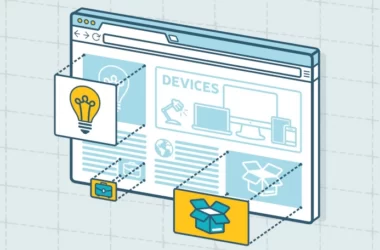As a startup founder, I can’t stress enough how crucial market research is to the success of your venture. It’s not just a box to check off on your to-do list; it’s the foundation upon which your entire business model rests. When I first embarked on my entrepreneurial journey, I underestimated the power of understanding my target audience.
I thought I had a great idea, but without solid research, I was essentially shooting in the dark. Market research helps you identify who your customers are, what they need, and how your product can fill that gap. Diving deep into market research allows you to uncover trends, analyze competitors, and understand consumer behavior.
It’s about gathering insights that can guide your product development and marketing strategies. For instance, I learned that my initial assumptions about my target demographic were off-base. By conducting surveys and interviews, I was able to pivot my approach and tailor my offerings to better meet the needs of my audience.
This not only saved me time and resources but also set the stage for a more successful launch.
Key Takeaways
- Market research is crucial for understanding the needs and preferences of your target audience.
- Choosing the right development team with the necessary skills and experience is essential for the success of your project.
- Focusing on core features helps in delivering a minimum viable product and avoiding feature creep.
- Testing and iterating allows for continuous improvement and ensures a high-quality end product.
- Setting realistic expectations for timelines, costs, and outcomes is important for managing stakeholders’ expectations.
Choosing the Right Development Team
Understanding Your Options
I remember when I was in the early stages of my project; I was overwhelmed by the number of options available. Should I hire full-time developers, freelancers, or partner with a tech agency? Each option has its pros and cons, and it’s essential to weigh them carefully.
Expertise and Experience Matter
selecting a development team, consider their expertise and experience in your specific industry. You want a team that not only understands technology but also has a grasp of your market dynamics. For example, if you’re building a healthcare app, having developers who have worked on similar projects can be invaluable.
Effective Communication is Key
Additionally, look for a team that values communication and collaboration. In my experience, having open lines of communication with my developers led to smoother project management and quicker iterations.
Focusing on Core Features
In the excitement of bringing an idea to life, it’s easy to get carried away with features. I’ve been there—dreaming up a laundry list of functionalities that I thought would make my product irresistible. However, one of the most important lessons I learned was the value of focusing on core features first.
Your Minimum Viable Product (MVP) should solve a specific problem for your users without overwhelming them with unnecessary bells and whistles. By honing in on core features, you can streamline your development process and reduce costs. It’s about delivering value without complicating the user experience.
When I launched my MVP, I made sure it addressed the primary pain points of my target audience. This not only made it easier for users to adopt but also provided me with valuable feedback for future iterations. Remember, you can always add more features later based on user feedback and market demands.
Testing and Iterating
Once your MVP is live, the real work begins—testing and iterating. This phase is where you gather feedback from real users and make necessary adjustments to improve your product. I can’t emphasize enough how important it is to embrace this iterative process.
Initially, I was hesitant to make changes based on user feedback because I felt attached to my original vision. However, I quickly realized that listening to users is key to creating a successful product. Testing doesn’t just mean fixing bugs; it’s about understanding how users interact with your app or website.
Are they finding it intuitive? Are there features they wish they had? By conducting usability tests and gathering analytics data, you can gain insights that will inform your next steps.
Iteration is not a sign of failure; it’s an opportunity for growth. Each round of testing brings you closer to a product that truly meets the needs of your audience.
Setting Realistic Expectations
As founders, we often have big dreams and lofty goals for our startups. While ambition is essential, it’s equally important to set realistic expectations for yourself and your team. When I first launched my startup, I expected everything to go smoothly right out of the gate.
However, reality hit hard when I faced unexpected challenges and setbacks. It was a humbling experience that taught me the importance of patience and resilience. Setting realistic expectations involves understanding that building a successful startup takes time and effort.
It’s about recognizing that not every feature will be perfect on the first try and that user adoption may take longer than anticipated. By being transparent with your team about potential hurdles, you create an environment where everyone can work together to overcome challenges. Remember, every setback is an opportunity to learn and grow.
Building a Scalable Infrastructure
As you develop your product and gain traction in the market, it’s crucial to think about scalability from the outset. Building a scalable infrastructure means designing your technology stack in a way that can accommodate growth without significant overhauls down the line. When I first started out, I didn’t fully grasp this concept, and it led to some growing pains as my user base expanded.
Consider cloud-based solutions that allow for flexibility as demand increases. This way, you won’t have to worry about server crashes or slow load times as more users come on board. Additionally, ensure that your codebase is clean and well-documented so that future developers can easily understand and build upon it.
A scalable infrastructure not only supports growth but also instills confidence in investors and stakeholders who are looking for long-term viability.
Planning for User Feedback and Support
User feedback is invaluable in shaping your product’s future direction. However, it’s not just about collecting feedback; it’s also about having a plan in place for how you’ll respond to it. When I launched my MVP, I made it a priority to establish channels for users to provide feedback easily—whether through surveys, social media, or direct communication.
Moreover, having a robust support system in place is essential for retaining users and building loyalty. Users appreciate knowing that their concerns are heard and addressed promptly. Consider implementing a ticketing system or live chat feature to assist users effectively.
By prioritizing user feedback and support, you create a community around your product that fosters trust and engagement.
Budgeting for Unexpected Costs
Finally, let’s talk about budgeting—specifically budgeting for unexpected costs. As startup founders, we often create financial projections based on our best estimates, but the reality is that surprises will arise along the way. Whether it’s additional development costs, marketing expenses, or unforeseen operational challenges, having a financial cushion can save you from panic mode.
When I first started budgeting for my startup, I made sure to allocate a portion of my funds for contingencies. This allowed me to navigate unexpected hurdles without derailing my entire project. It’s also wise to regularly review your budget and adjust as necessary based on actual expenses versus projections.
By being proactive about budgeting for unexpected costs, you’ll be better equipped to handle whatever challenges come your way.
From understanding market research to building a scalable infrastructure, each step plays a vital role in your success journey.
If you’re looking for a trusted tech partner to help you along the way, consider Witarist as your go-to solution for MVP development and beyond.
Let’s connect!
Reach out today to see how Witarist can help you build the product of your dreams while navigating the complexities of startup life together!
If you’re interested in learning more about the developer community and staying up-to-date on industry trends, check out this article on CoderstoHire. It provides valuable insights and resources for developers looking to enhance their skills and knowledge. Additionally, if you’re considering implementing a cloud strategy for your MVP, you may find this article on cloud strategy helpful in guiding your decision-making process.
FAQs
What is an MVP?
An MVP, or Minimum Viable Product, is a version of a product with just enough features to satisfy early customers and provide feedback for future product development.
What are some common mistakes to avoid when building an MVP?
Common mistakes to avoid when building an MVP include overcomplicating the product, not focusing on the core value proposition, and not seeking early feedback from potential customers.
What are the key benefits of building an MVP?
Building an MVP allows for early market validation, reduces the risk of product failure, and provides valuable feedback for future product iterations.
What are some important considerations when building an MVP?
Important considerations when building an MVP include identifying the core features that provide the most value to customers, understanding the target market, and creating a scalable and flexible architecture.
How can I effectively test and iterate on my MVP?
To effectively test and iterate on an MVP, it’s important to gather feedback from early adopters, analyze user behavior and metrics, and prioritize feature enhancements based on customer needs and market trends.










